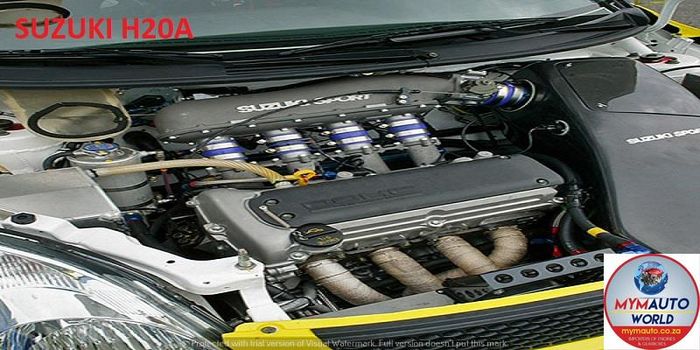Comprehensive Evaluation of a Subcompact Auto's Powertrain Capabilities
In the world of auto engineering, the powertrain of a subcompact automobile stands as an essential nexus where technology, efficiency, and performance merge. From the engine's unrelenting search of optimum performance to the transmission's seamless choreography of power circulation, every component plays an essential function in defining the total driving experience.
Engine Efficiency Evaluation
In evaluating the engine efficiency of the subcompact auto, a comprehensive analysis discloses its performance and power result under numerous driving problems. The subcompact automobile's engine, an important component of its powertrain system, demonstrates extensive performance metrics. The engine's effectiveness is remarkable, as it optimizes gas usage without endangering power delivery. Under regular driving problems, the engine runs efficiently, showcasing an equilibrium in between efficiency and fuel economy.
Moreover, when based on extensive screening scenarios such as high-speed acceleration or uphill climbs, the engine demonstrates resilience and responsiveness. Its power outcome remains regular, providing appropriate acceleration when required. The subcompact automobile's engine is customized to fulfill the demands of city driving, where quick acceleration and active maneuverability are essential.
Moreover, the engine's layout incorporates contemporary innovations that enhance its efficiency characteristics. Features like turbocharging or variable valve timing add to improved power distribution and torque, enhancing the general driving experience. In verdict, the engine efficiency of the subcompact vehicle highlights its capacity to deliver efficient and reliable power result throughout various driving conditions.
Transmission Performance Analysis
Assessing the subcompact car's transmission effectiveness entails evaluating its efficiency in transmitting power seamlessly across numerous driving problems. The efficiency of a transmission system is vital as it straight affects the total performance and fuel economic climate of the lorry. In assessing transmission performance, factors such as gear proportions, change timing, and the level of smoothness of equipment adjustments are considered. A well-designed transmission system ought to effectively supply power from the engine to the wheels while reducing energy losses.
One common approach used to evaluate transmission efficiency is through dynamometer screening, where the power result from the engine is gauged at the input and result shafts of the transmission. Disparities in between input and outcome power can suggest the level of effectiveness of the transmission system. Furthermore, real-world driving tests are conducted to assess just how the transmission does in useful situations. By evaluating these aspects, designers can determine areas for enhancement and enhance the transmission system for better total performance and efficiency.
Gas Performance Assessment
The examination of the subcompact car's fuel performance includes a comprehensive analysis of its usage rates under different driving problems. Fuel performance is an important consider analyzing the general efficiency and cost-effectiveness of a vehicle. By determining the quantity of fuel eaten per unit range took a trip, generally shared as miles per gallon (MPG) or liters per 100 kilometers (L/100 kilometres), the performance of the subcompact automobile's powertrain can be identified.

In addition, advancements in modern technology, such as hybrid systems, regenerative braking, and automatic start-stop systems, have significantly improved fuel performance in modern-day subcompact cars and trucks. Manufacturers remain to innovate and maximize powertrain elements to boost fuel efficiency while satisfying efficiency demands and ecological regulations. Evaluating a subcompact car's gas performance supplies important insights for customers looking for economical and lasting transport options.
Acceleration and Handling Analysis
An important aspect of reviewing the efficiency capabilities of a subcompact car depends on examining its velocity and dealing with characteristics. Acceleration is critical as it figures out how promptly the car can get to desired rates, influencing overall driving experience and ability to move in various website traffic conditions. opel corsa engine. Subcompact cars and trucks are commonly favored for their nimbleness and dexterity, making velocity from dead stop and during overtaking maneuvers essential elements to take into consideration
When it concerns taking care of, a subcompact vehicle's capability to browse corners, preserve security at broadband, and give a receptive guiding feeling are critical. Tight city roads and winding roads call for exact dealing with to make certain chauffeur confidence and safety and security. Factors such as suspension tuning, weight distribution, and tire grip play considerable duties in determining a subcompact automobile's total handling prowess.

Powertrain Elements Review
Upon delving right into the complexities of a subcompact auto's performance, an extensive exam of its powertrain components is vital to comprehend the lorry's mechanical foundations. The powertrain of a subcompact auto usually is composed of the engine, transmission, driveshaft, differential, and axles. Recognizing just how these about his parts work together is vital in assessing a subcompact vehicle's general performance, effectiveness, and driving dynamics.
Final Thought
To conclude, the subcompact car's powertrain capabilities have been thoroughly analyzed in regards to engine efficiency, transmission effectiveness, gas efficiency, handling, and acceleration. The detailed evaluation highlights the click over here now value of each element working with each other flawlessly to deliver optimum efficiency. Generally, the powertrain components of the subcompact vehicle have actually been located to be efficient and well-balanced, making it a dependable choice for chauffeurs seeking a portable and fuel-efficient vehicle.
In the world of auto design, the powertrain of a subcompact vehicle stands as a crucial nexus where performance, advancement, and performance merge.In assessing the engine performance of the subcompact car, a thorough analysis exposes its performance and power result under various driving problems.Analyzing the subcompact automobile's transmission performance involves examining its performance in transferring power flawlessly across different driving problems. Recognizing how these elements function together is important in analyzing a subcompact car's general performance, effectiveness, and driving characteristics.In conclusion, the subcompact cars and truck's powertrain capacities have actually been thoroughly analyzed in terms of engine performance, transmission effectiveness, gas handling, velocity, and performance.